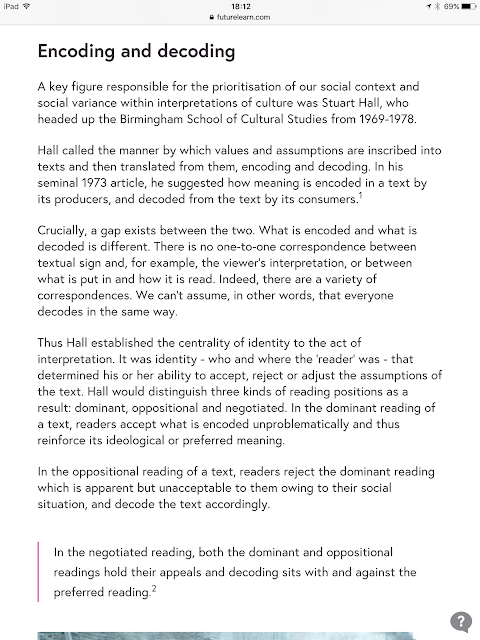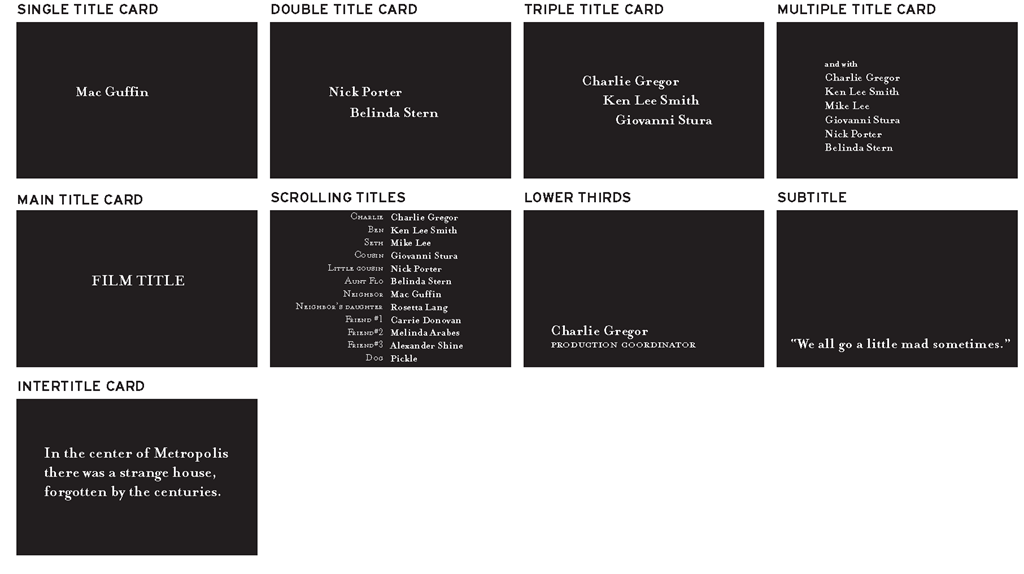Start by making a blog post with text and images for each point (will become a slide / section) in the right order. Keep each section to the point. You are not writing a novel. You are proving that you have done the research.
When the writing is done, you will present it all crisply using an appropriate presentational tool (such as infographic, Emaze, Slideshare). The aim is to demonstrate to the moderator that you know about theoretical frameworks and about how producers target audiences.
At the same time, the exercise will help you revise for the A2 exam Section A question 1b (audience).
CONTENT. You should cover:
1 - AUDIENCE: A KEY CONCEPTAll media texts are produced with an audience in mind - that is to say a group of people who will receive the text and make some sort of sense out of it.
Understanding audience research will help me plan my own production.
So audience is part of the media equation – a product is produced and an audience receives it. Television producers need an audience for their programmes, so they can finance those programmes and make more programmes that the audience likes. Advertisers need an audience who will see or hear their advertisements and then buy the products.
A media text is planned with a particular audience in mind. A television producer has to explain to the broadcasting institution (e.g. BBC or ITV) who is the likely audience for this particular programme.
Are they under 25 years old or older, mainly male or mainly female, what are they interested in? The television audience varies throughout the day and night, and television and radio broadcast for 24 hours, seven days a week. How do we know who is watching or listening at any one time? This is where audience research becomes important.
A media producer has to know who is the potential audience, and as much about them as possible.
My next task is to create / devise / design an audience profile for my own production
2 - AUDIENCE PROFILING
TYPES OF AUDIENCE RESEARCH
Audience profiling such as socioeconomics,demographics, psychographics |
| PSYCHOGRAPHICS (above) is a way of describing an audience by looking at the behaviour and
personality traits of its members. Psychographics labels a particular
type of person and makes an assessment about their viewing and spending
habits. The advertising agency Young and Rubican invented a successful psychographic profile known as their 4C’s Marketing Model http://www.4cs.yr.com The 4 Cs stand for Cross Cultural Consumer Characterisation. They put the audience into groups with labels that suggest their position in society |
3 - AUDIENCES AS PASSIVE (4 items)
THE MEDIA EFFECTS MODEL
The media effects (hypodermic syringe) modelSTUDIES USED TO SUPPORT THE EFFECTS MODEL
Bobo doll (Albert Bandura, 1961);MORAL PANICS
What are moral panics?THE ROLE OF THE MEDIA IN MORAL PANICS

Read The Guardian article. What films have been implicated in producing copycat crime?
4 - ADORNO AND THE CULTURE INDUSTRY
For Theodore Adorno, advertising creates false needs. Adorno (1903-69) argued that capitalism fed people with the products of a 'culture industry' - the opposite of 'true' art - to keep them passively satisfied and politically apathetic.
Adorno suggested that
culture industries churn out a debased mass of unsophisticated,
sentimental products which have replaced the more 'difficult' and critical art
forms which might lead people to actually question social life.
False needs are cultivated in people
by the culture industries. These are needs which can be both created and
satisfied by the capitalist system, and which replace people's 'true' needs -
freedom, full expression of human potential and creativity, genuine creative
happiness.
Products of the culture industry may be
emotional or apparently moving, but Adorno sees this as cathartic - we might
seek some comfort in a sad film or song, have a bit of a cry, and then feel
restored again.
5 - AUDIENCES AS ACTIVE (3 items)

MASLOW'S HIERARCHY OF NEEDS
We learn about higher order needs using Maslow's Hierarchy of Needs. Where does popular culture sit in this debate?WHY AUDIENCES CONSUME TEXTS: THE USES AND GRATIFICATIONS MODEL
We look at different models of audience behaviour. Mediaknowall will remind you of what we discussed.The uses and gratifications model of audience behaviour (Blumler and Katz, 1974)
THE TWO-STEP FLOW MODEL
Katz and Lazarsfeld assumes a slightly more active audience. It suggests messages from the media move in two distinct ways. First,
individuals who are opinion leaders, receive messages from the media
and pass on their own interpretations in addition to the actual media
content.
First,
individuals who are opinion leaders, receive messages from the media
and pass on their own interpretations in addition to the actual media
content. The audience then mediate the information received directly from the media with the ideas and thoughts expressed by the opinion leaders, thus being influenced not by a direct process, but by a two step flow.
This theory appeared to reduce the power of the media, and some researchers concluded that social factors were also important in the way in which audiences interpret texts. This led to the idea of active audiences.
6 -RECEPTION THEORY
STUART HALL AND CULTURAL STUDIES
RECEPTION THEORY focuses on the scope in textual analysis for 'negotiation' and 'opposition' on the part of the audience. This means that a text ( a book, film, advert, poster or other creative work) is not passively accepted by the audience but that the reader / viewer interprets the meanings of the texts based on their individual cultural background and life experiences.Stuart Hall’s encoding decoding model; dominant, negotiated and oppositional readings; why Hall says he studies culture instead of media specifically, and media hegemony. Audiences are no longer considered passive recipients.



















